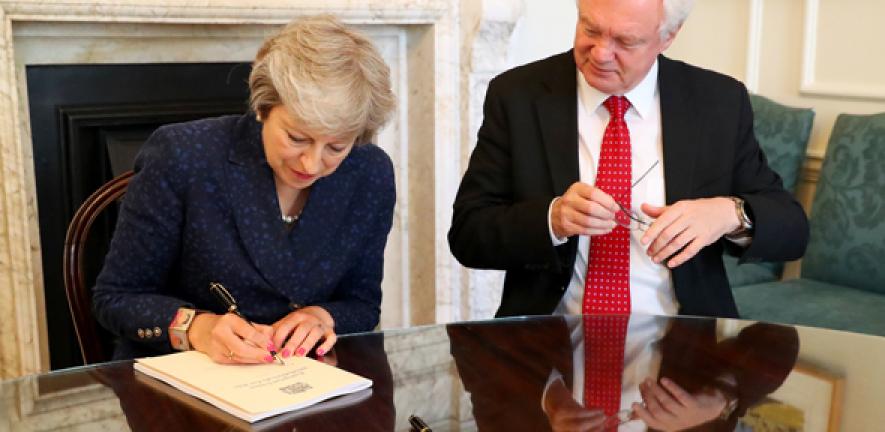
Will the UK agree to an extended transition period, keeping it bound by EU rules for longer after exiting the EU? Here, Professor Kenneth Armstrong outlines three “potential models” to extend the transition period, as explored in his new research paper published today.
Will the UK agree to an extended transition period, keeping it bound by EU rules for longer after exiting the EU? Here, Professor Kenneth Armstrong outlines three “potential models” to extend the transition period, as explored in his new research paper published today.
A perpetual transition would be politically unacceptable... and conflict with EU law. It would, therefore, need an exit mechanism
Kenneth Armstrong
For some time now, both the United Kingdom and European Union have agreed that once the UK ceases to be a Member State on 29 March 2019, it will enter into a ‘stand-still’ period – during which the UK will continue to be bound by its existing EU obligations.
The rationale behind this is to avoid a ‘cliff-edge’ departure that would see tariffs and regulatory controls imposed on cross-border trade between the UK and the EU.
To the extent there has been disagreement between the two sides it has been on terminology – the EU refers to this as a ‘transition period’ while the UK insists on calling it an ‘implementation period’ – and duration – the UK sought a two-year period whereas the EU was only willing to agree a transition that would end on 31 December 2020 (coinciding with the end of the current budgetary ‘multi-annual framework’). The UK agreed to the EU’s offer of a transition ending in December 2020.
However, the duration of the transition period has come back to the fore of the negotiations for two reasons.
The UK believes that the issue of how to avoid a hard border on the island of Ireland can only properly be resolved in the context of the negotiations on the future economic relationship. The UK had hoped that this might be negotiated in parallel with the withdrawal arrangements.
However, the EU has insisted that it is only the framework for future cooperation that can be discussed in the context of the withdrawal negotiations, meaning that the terms of a future economic relationship can only be agreed once the UK leaves. As long as the UK is in transition, the issue of frontier controls on the island of Ireland does not arise.
But with the transitional period ending at the end of 2020, EU negotiators have insisted on the need for a ‘backstop’ to ensure that, if transition ends without a deal that meets the commitments made in the 2017 Joint Report, a ‘hard border’ in Ireland will be avoided. It is the failure to reach agreement on a backstop which is making negotiators on both sides reconsider a time-limited transition period.
The second reason is that the pace of negotiations, coupled with deep disagreement over the UK Government’s ‘Chequers Plan’, suggest that the transition period as currently conceived will be too short to allow for negotiations on a future relationship to be concluded. Taken together with the backstop issue, minds have turned to whether it would be prudent to extend transition.
In a recent European Policy Centre paper, Tobias Lock and Fabian Zuleeg make a strong case for the extension of transition, suggesting that a one-time one-year option to extend transition would be a workable solution.
In a new Research Paper, I have looked at three potential models for an extended transition:
- A one-off option to extend transition for a year following the end of the initial transition period (the Lock and Zuleeg model)
- A rolling or open-ended transition with an exit mechanism
- An extended transition and implementation facility.
While Lock and Zuleeg make a good case, their proposal still risks a ‘second cliff-edge’ at the end of an extended transitional period if there is no agreement on a future relationship. A one-year optional extension may not give negotiators enough time to reach an agreement, and might not create sufficient confidence to avoid the need to negotiate a backstop.
The most obvious way to avoid a backstop would be to keep the UK in transition unless and until a new economic partnership between the UK and the EU was agreed (provided also that this met the commitments on the Irish border agreed in the 2017 Joint Report).
However, a perpetual transition would be politically unacceptable, difficult to manage in budgetary terms, and conflict with EU law. It would, therefore, need an exit mechanism. This could be modelled on Article 50 itself and allow either the UK or the EU to notify the other of their intention to end the transition period.
A compromise solution draws on the existing draft Agreement, and would allow transition to end once new agreements on customs and trade, foreign, security and defence policy are agreed and became applicable. Unlike an open transition, this facility would need a defined endpoint, and a proposed deadline of 31 December 2022 is suggested.
The aim would be to give negotiators the flexibility to agree new partnership arrangements, but with incentives to reach agreements early – avoiding the continued use of the transition and implementation facility. The UK and EU could depart transition well before the facility expired.
Kenneth Armstrong is Professor of European law and holds a Leverhulme Trust Major Research Fellowship for the project The Brexit Effect – Convergence, Divergence and Variation in UK Regulatory Policy.

The text in this work is licensed under a Creative Commons Attribution 4.0 International License. Images, including our videos, are Copyright ©University of Cambridge and licensors/contributors as identified. All rights reserved. We make our image and video content available in a number of ways – as here, on our main website under its Terms and conditions, and on a range of channels including social media that permit your use and sharing of our content under their respective Terms.




